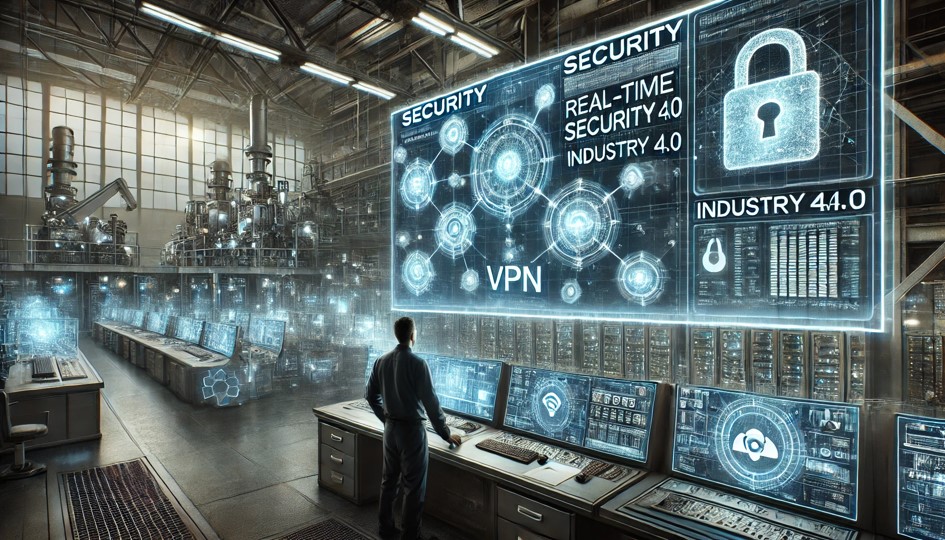The increase in connected devices exposes companies to growing cybersecurity threats. The NIS2 Directive and the IEC 62443 standard frame...

With Industry 4.0 and the integration of IT and OT, cybersecurity best practices are crucial to protecting critical infrastructure, data, and remote assistance systems. Advanced technologies such as Artificial Intelligence, Machine Learning, and Blockchain enhance security by detecting anomalies in real time and reducing incident response times.
The growing digitalization, the integration of IT (Information Technology) and OT (Operational Technology) systems, and the adoption of industrial remote assistance solutions have transformed the way companies operate, bringing significant benefits in terms of efficiency and productivity. However, this progress also introduces new cybersecurity challenges, requiring an integrated and proactive approach to safeguard critical infrastructures from increasingly sophisticated threats.
The convergence of IT and OT is one of the key aspects of Industry 4.0. Traditionally isolated and designed to operate in closed environments, OT technologies are becoming increasingly connected to corporate IT networks to improve operational efficiency and enable real-time data analysis. However, this integration also introduces new vulnerabilities. Cyberattacks can spread from the IT network to the OT network, compromising operational security and business continuity. For instance, malware affecting an IT system can easily spread to OT devices, causing machinery malfunctions or production stoppages.
To address cybersecurity challenges related to industrial remote assistance and IT-OT integration, companies must adopt a multidisciplinary approach that includes advanced technologies, well-defined processes, and a shared security culture. Below, we analyze the key practices to implement.
Cybersecurity best practices are essential guidelines and strategies to protect IT systems, data, networks, and devices from attacks, theft, and breaches. Industrial remote assistance, which enables remote access to machinery and production systems, requires particularly high security due to potential vulnerabilities.
A fundamental approach involves the adoption of advanced authentication with multi-factor authentication (MFA) and access policies based on the principle of least privilege, ensuring that only authorized users have access. Additionally, VPN connections and advanced encryption protect data confidentiality and integrity by securing communications between operators and remote assistance systems against interception and tampering.
Access control and network segmentation are also crucial to reducing the risk of attacks spreading between IT and OT environments. This separation limits potential threats and keeps production areas isolated. Keeping software and devices up to date with security patches prevents exploitation of known vulnerabilities. Furthermore, continuous network activity monitoring and logging allow for tracking access, changes, and anomalies.
Advanced threat detection tools, including AI-based algorithms, enable real-time detection of suspicious behavior and rapid response, isolating and resolving potential breaches to minimize downtime and damage.
Endpoints used for remote control, such as workstations, PCs, tablets, and smartphones, must be protected with firewalls and updated antivirus software to prevent them from becoming attack entry points. Employee training is equally critical: raising awareness among staff and technicians about cybersecurity risks and best practices helps prevent threats like phishing and social engineering attacks.
Finally, an up-to-date incident response plan is essential, including procedures to quickly isolate and resolve security breaches and ensure that external suppliers comply with high security standards.These best practices create a robust and resilient security ecosystem, allowing industrial remote assistance to operate securely while protecting the integrity of machinery and company data confidentiality.
The adoption of advanced technologies such as Artificial Intelligence (AI), Machine Learning (ML), and Blockchain adds an extra layer of security to industrial remote assistance systems, optimizing data protection, reliability, and threat response.
For example, AI and ML enable anomaly detection by analyzing network data in real time to identify suspicious behaviors such as unauthorized access or data manipulation attempts that could indicate a threat. With continuous learning, ML algorithms can "learn" from new attacks and automatically update defenses—an essential feature in industrial environments where threats evolve rapidly.
Automated incident response powered by AI allows for immediate action, such as isolating a compromised device or blocking suspicious connections, reducing response times and minimizing damage. In remote assistance scenarios, this ensures rapid and effective protection of industrial machinery. Another key advantage is predictive analytics: ML algorithms can help prevent future incidents by identifying vulnerabilities and recommending security updates or improvements before threats can exploit them.
Blockchain technology, on the other hand, ensures data integrity and traceability through a distributed, immutable, and verifiable ledger. This is particularly useful for securely storing all remote assistance transactions, ensuring that every access or data modification is transparently tracked and unalterable.Decentralized authentication using Blockchain reduces reliance on centralized authentication systems, which can be security weak points. Instead, authorized devices can have a unique key stored on the Blockchain, strengthening protection against unauthorized access.
Smart contracts further enhance security by automating access permissions, allowing devices to be accessed only under specific and verifiable conditions, reducing human error, and improving authorization precision. Moreover, Blockchain simplifies auditing and helps ensure compliance with security and privacy regulations, such as GDPR, by providing a transparent and immutable record of all remote assistance activities.
The integration of these technologies significantly reduces threat detection and response times, enhancing resilience against cyberattacks. In IoT-based remote assistance systems, combining Blockchain and AI can prevent man-in-the-middle attacks by ensuring that only registered devices can connect, while ML verifies that transmitted data follows expected behavior patterns.
The increase in connected devices exposes companies to growing cybersecurity threats. The NIS2 Directive and the IEC 62443 standard frame...
Industrial remote assistance, essential for optimizing operations and remote maintenance, requires robust security measures. This article explores eight key strategies...
